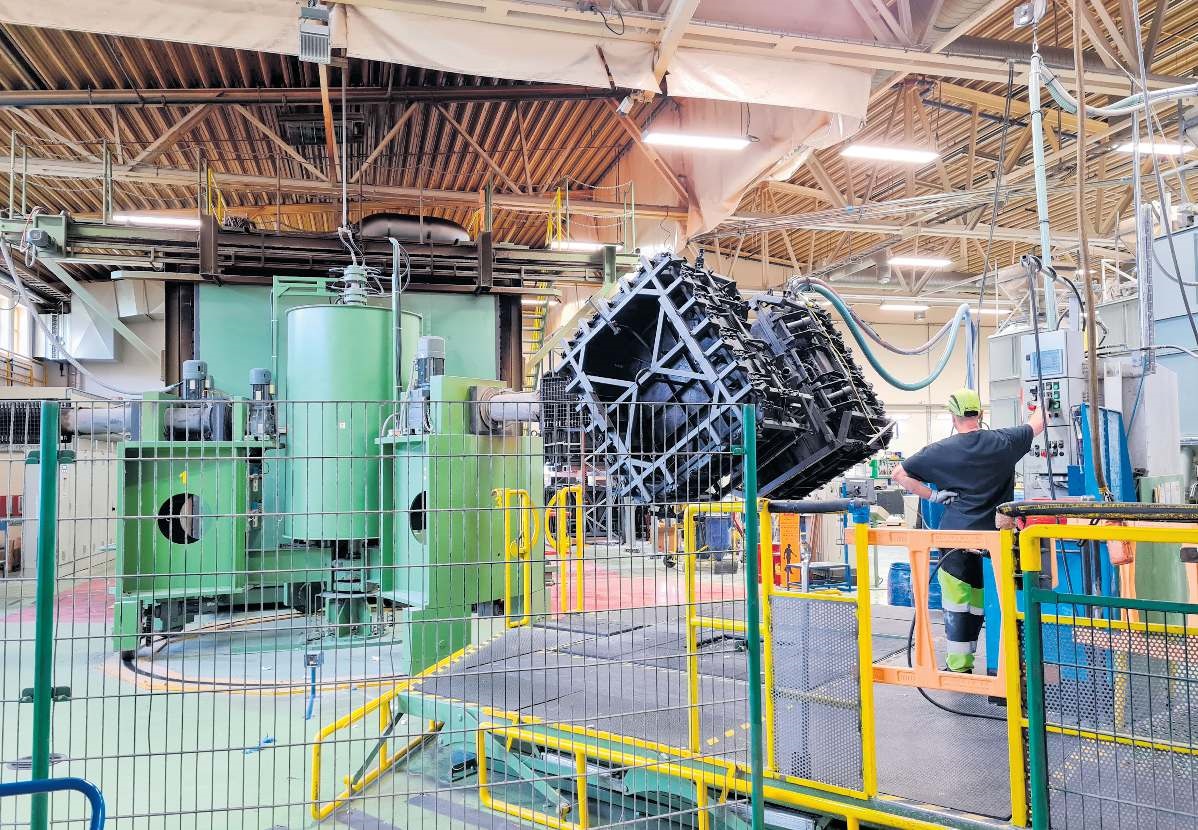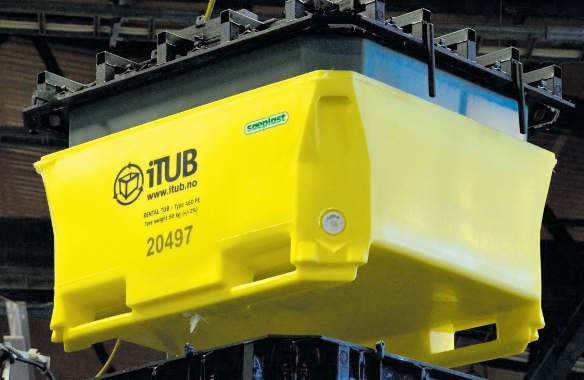Ecofriendly
Sæplast is committed to protecting the environment

Sæplast in Dalvík employs around 75 people, and the company is set to be the first of its kind to only use electricity for production.
Work on completing the energy exchange is currently underway at Sæplast's plant in Dalvík, says Arnar Snorrason, Managing Director of Sæplast Europe. “In the autumn, we will replace an oil-powered oven we have used in our production with one powered by electricity. This is an important step for us. Our most productive moulding oven is already powered by electricity, but this will help us achieve our goal of powering all our container production with environmentally friendly and green energy, making us the first rotomoulding company in the world to be able to make such a claim.”
He says that Sæplast, in collaboration with the company's suppliers, has been a pioneer in developing moulding ovens that can run on electricity, adding that this milestone is also way of showing responsibility while meeting constantly increasing customer demand for environmentally friendly production methods.
Last year, Icelandic investors completed the acquisition of Berry Global Inc.’s rotomoulding operations, including Sæplast and Tempra, with these operations subsequently transferred to Rotovia hf., a company owned by the private equity funds SÍA IV og Freyja, along with key management personnel. Thus, Sæplast's operations are again under Icelandic ownership, in time for the company’s 40th anniversary next year.
Rotovia is currently the largest rotomoulding company in Europe, employing around 800 employees and operating ten plants in seven countries and sales units in all parts of the world. Sæplast in Dalvík has a staff of about 65, in addition to which there are warehouses in Norway and plants in Spain and Canada. “We have a tight network of sales representatives all over the world and we are actively working on product development in partnership with our demanding customers,” Arnar says. He says that immediately following the change of ownership, an extensive strategic planning process was undertaken, a part of which included the decision to say goodbye to oil as an energy source. “The first thing we did was to set a clear strategy for the coming years about where, with whom and, not least, how we want to grow.”
With this new direction came an increased focus on environmental factors. “One of our special priorities was the circular economy, which is a very important factor in our strategy. There has been great demand for non-disposable packaging with our customers. Many companies have established goals for social responsibility and policies to fulfil the UN’s Sustainable Development Goals, and our non-disposable packaging is our way to meet the expectations of our customers in these matters.”
Arnar explains that Sæplast's containers were initially made from polyethylene and insulated with polyurethane and that for a long time, these materials were used for most of the company’s products. There have been significant changes in recent years, however, and “today the vast majority of our production is designed to be one hundred percent polyethylene, which makes all our containers one hundred percent recyclable. The previous designs made this method of recycling very difficult, practically impossible. This is the result of targeted product development to meet the market demand that a certain percentage of the plastic be recycled. When the containers have served their purpose in about 10 to 15 years, we want them back for recycling.”

Arnar Snorrason, Managing Director of Sæplast, says the production is constantly evolving and the focus has been on recycling and employing environmentally friendly energy sources.
Are Sæplast’s containers fully recyclable?
“Yes. We are starting to completely grind down containers made from one hundred percent polyethylene, and then there is a special process that the material must undergo to reenter our manufacturing process. This is something that we have been developing for the last two or three years, and we have now reached the point where we can do this properly, so now we would like to receive used containers for recycling.”
Recycling of plastic has been costly and expensive. Has technology reached the point where recycling is cost-effective, or are customers more likely to be willing to pay for a container made from reusable or recycled materials?
“Although costs have been going down, recycled materials are currently no less expensive than new materials. What motivates us in this is, first, our willingness to take responsibility for our production, and then there are the countries and customers who now require that a certain percentage of products be made from recycled plastic.”
Since most of Sæplast's production is exported to overseas markets, used containers are collected in Europe, where they are crushed before being used to produce new containers.
Sæplast's customers have high safety standards and do not care what the containers are used for, explains Arnar. If food is being stored in the containers, food safety requirements must be met, but in addition to using the containers in the seafood industry, there is a growing use in other food processing sectors like poultry and pig as well as in the recycling industry
The containers are also required to be safe during transportation and the personnel who work around the vessels every day must also be certain of their safety. “Consumers also want to know that the product is safe. Increased security will help prevent a lot of waste throughout the entire value chain,” Arnar says.
There are many opportunities for further growth for Sæplast's non-disposable containers, according to Arnar, who points out that just about a decade ago, Sæplast launched the container rental service iTUB in collaboration with the company’s key customers. This offers customers considerable flexibility if they do not find it feasible to purchase containers. “The service has been very well received and business has grown year after year.”

The container rental service iTUB has been successful and is constantly growing.
Sæplast has also worked systematically in recent years to find ways to decrease the weight of the company's products. “Use less plastic and shorten the manufacturing process. In this, we have been working with the interplay between product design and manufacturing technology,” says Arnar, who points out that opportunities in container production are constantly increasing.